Osteoarthritis refers to a clinical syndrome of joint pain accompanied by varying degrees of functional limitation and associated reduced quality of life. It is the most common form of arthritis, and one of the leading causes of pain and disability worldwide. Next to pain, the reduced ability to perform day-to-day activities can affect self-efficacy, mood, sleep and overall health. (1)
The name osteoarthritis comes from three Greek words meaning bone, joint, and inflammation.
Indeed, as the National Institute for Health and Care Excellence (UK) writes, Osteoarthritis is characterized by localized loss of cartilage, remodelling of adjacent bone and associated inflammation (1). Cartilage is the connective tissue at the end of our bones which cushions joints and allows for smooth movement.
The most commonly affected joints are the knees, hips, small hand joints and spine.
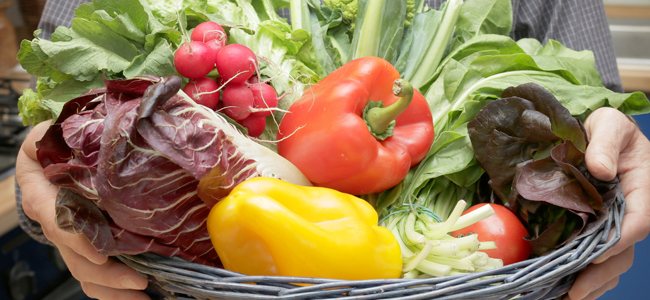
Causes
According to the National Institute for Health and Care Excellence in the UK, contrary to popular belief, osteoarthritis is not solely caused by ‘aging’ as such and does not necessarily deteriorate. (1)
So how and why does it develop? A variety of traumas such as overuse, injury or faulty biomechanics during regular activities may trigger the need for a joint to repair itself. If this trauma exceeds the body’s ability to repair, osteoarthritis can ensue. (1)
Some of the factors that reduce our body’s repair mechanisms, and predispose us to the development of osteoarthritis are dietary insufficiencies of the joints’ building blocks, low grade inflammation and genetics (3).
Despite osteoarthritis traditionally having been classified as a non-inflammatory arthritis (compared to the highly inflammatory rheumatoid arthritis, for example), it is now becoming increasingly recognized that low grade inflammation of the entire body is, in fact, also underlying osteoarthritis (1). This prolonged low grade inflammation of the joint’s connective tissue can completely destroy the cartilage, and in some cases, lead to the formation of bony spurs or cysts in the joints which destroys mobility and creates symptoms including joint pain, bony lumps & discomfort (2) .
Symptoms
- Morning stiffness that gets better with movement
- Joint pain that increases with overuse and is often worse in the evening
- Clicking or cracking sound on movement
- Swelling or tenderness, especially after use
- Bony lumps on the fingers
- Loss of joint flexibility
- Mainly in the hands, knees, hips, back and neck, but can be anywhere in the body
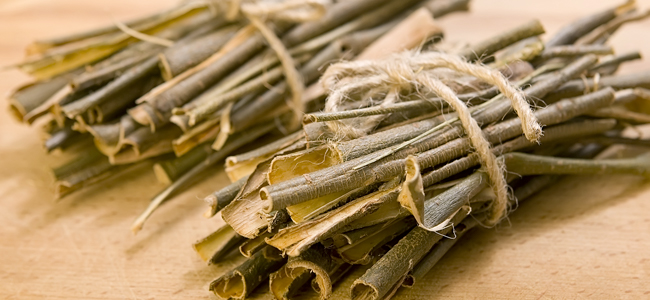
Treatment
Although it is difficult to reverse the damage done to the joints once it has deteriorated to the point that bone spurs have started forming, prevention, slowing of progress before bone formation, and reduction of symptoms is possible (3).
With functional medicine, we look at the underlying causes and aim to correct these. In the case of osteoarthritis, our main goals are to find the source for, and treat the chronic low grade inflammation, nutrient deficiencies that prevent the joint from healing itself, and balancing joint overuse and maltracking with manual and physical therapy tools.
Nutritional Guidelines for Healing
- Transition to an anti-inflammatory lifestyle - Slowly remove inflammatory foods such as wheat, other gluten containing foods, trans-fats, synthetic foods and excessive sugars from your diet. Replace with a wholefood diet filled with leafy greens, colorful vegetables, nuts, seeds, quality protein and nourishing fats. Focus specifically on boosting your intake of omega-3 rich foods such as organically farmed or wild-caught salmon, organic and grass-fed beef, chia seeds, hemp seeds, flax seeds & walnuts. If this seems a bit overwhelming and you’re unsure how to get started, let us guide you with our 21 Day Food Matters Clean Eating Program (4)
- Modified Ketogenic Diet & Intermittent Fasting - A great way to help your body get rid of inflammation is a modified ketogenic diet with intermittent fasting. Not only has it been shown to reduce overall mortality, boost anti-aging, and help weight loss, it also greatly reduces inflammation and increases self-healing. An easy way to incorporate this into your daily life is to refine the above guidelines to further cut down on sugary foods and limit these to 1 fruit and 1 portion of starchy foods, such as sweet potatoes, yam, quinoa, or buckwheat per day. Add in plenty of anti-inflammatory omega-3 fats. Play with a modified intermittent fasting, such as slowly increasing your daily ‘fasting window’ from 12 to 16 hours. Try out the modified version – a ‘bulletproof’ coffee or tea for breakfast (coffee/tea with organic butter, coconut or MCT oil and a sprinkle of Himalayan salt) to keep your energy, mood and hormones going until lunch, while keeping your body in the anti-inflammatory and cleansing ‘fasting state’. (5)
- Hydration - Best is pure, filtered water, drunk out of glass or stainless steel bottles or cups. Avoid plastic bottles as they inflame your body, disrupt your hormones (6) and harm mother nature.
- Cartilage building foods: Bone broth - Consume 2 cups of homemade bone broth daily. Broth is rich in vitamins and minerals and is a direct source of collagen, chondroitin and glucosamine, which can help reduce inflammation and pain, as well as increase joint mobility (7, 8)
- Cartilage building foods: Cruciferous vegetables - Broccoli, cabbage, kale and the like are not only great for detoxing your body, they also contain compounds necessary for the building of healthy joints. Add some in daily, ideally lightly cooked or steamed for the best nutrient absorption.
- Fermented foods, vitamin D, exercise, sleep
- Heal your gut - A gut imbalance has been shown in numerous studies to create low grade inflammation throughout the entire body. Add in gut healing foods such as fermented goodies (sauerkraut, kimchi, kombucha), prebiotics (vegetables, cooked and cooled potatoes), butter and avoid gut damaging processed sugars, synthetic additives and trans fats.
- Antioxidant Superfoods - Drink green tea, eat plenty of colorful vegetables & add berries and non-denatured whey protein powder regularly. These foods are rich in antioxidants, which help to counteract free radicals in the body. This is crucial as free radicals are one of the main elements that cause cartilage degradation and, if left unchecked, can contribute to the formation of certain diseases. (5)
- Cook with healing spices - Add turmeric, ginger & cayenne pepper to your meals whenever possible. These spices contain potent anti-inflammatory components which help to reduce inflammation.
- Ginger - Ginger is a powerful anti-inflammatory and is effective at reducing pain and inflammation associated with osteoarthritis (9). Clinical trials indicate that ginger extract and ibuprofen were identical in efficacy in the treatment of pain (10).
- Vitamin C rich foods - Consume foods rich in vitamin C daily or use a wholefood supplement. Vitamin C is a powerful antioxidant and is essential for collagen production in the body. Consuming a diet rich in vitamin C can prevent accelerated joint damage in osteoarthritis, as well as protecting against free radical damage (11). Food sources include aloe vera juice, blackcurrants, broccoli, brussels sprouts, citrus fruit, guava, parsley, pawpaw, strawberries and tomatoes.
Herbal, Superfood & Supplement Therapy
- Chondroitin - Take 150 mg of Chondroitin, twice daily. Chondroitin works by reducing inflammation and inhibiting cartilage degeneration. It is effective in the relief of pain and improvement of function in osteoarthritis, while exhibiting low adverse effects (12).
- Essential Fatty Acids - If you cannot eat fatty fish regularly (at least 2x/week), take 1,000 - 4,000 mg of a supplement that is high in essential fatty acids, such as quality krill, cod liver or flax oil (13) each day. As about 30% of the population are not very good in converting the plant-based version (flax) into the active form in the body due to genetic changes, I recommend going for the animal-based form unless you have had your DNA tested and know your body’s individuality. Regular intake of fish oil supplements can reduce morning stiffness and joint tenderness in osteoarthritis sufferers due to its anti-inflammatory properties.(14)
- Glucosamine - Take 500 mg of glucosamine sulphate, three times daily. Glucosamine can provide excellent pain relief for osteoarthritis sufferers and its long-term use can also prevent the need for joint replacements (15). A recent study found the dosage prescribed above was more effective than ibuprofen for pain relief associated with osteoarthritis (16).
- Willow Bark - Willow bark has long been used traditionally for its pain-relieving properties and has been shown to reduce pain in osteoarthritis patients(17). Please ask your health practitioner for supplementation advice for this.
- SAM-e (S-Adenosylmethionine) - Take 600 mg daily. SAM-e promotes the synthesis of proteoglycans, which are important proteins for connective tissue regeneration(18). Clinical trials suggest that SAM-e is as effective in osteoarthritis sufferers as NSAIDs for both pain control and functional improvements and has less side effects (19). However, as SAM-e can create anxiety in genetically predisposed individuals. Make sure to discuss this one with your health care practitioner before use.
- Devil’s Claw - Devil’s claw has anti-inflammatory and pain relief properties which aid in the treatment of inflammatory conditions such as osteoarthritis. It provides beneficial treatment for the relief of pain in musculoskeletal conditions (20). Consult your health practitioner for supplementation advice.
- Topical Capsaicin – Topical capsaicin has shown to provide pain relief by depleting neurotransmitter (pain signaling molecules) at the applied site. (1)
- Shea Nut Butter - You may know shea butter for its nice nutty smell in body lotions, but research has shown that it helps prevent and slow down degeneration of connective tissue and cartilage. Try adding some to your morning coffee/tea, for baking and cooking, or pure to soothe cravings. (21)
Mind/Body
There is often a poor link between changes on X-rays and symptoms. Minimal changes can be associated with a lot of pain and modest structural changes to joints often can occur without with minimal accompanying symptoms (1). We can therefore greatly influence healing and symptoms by applying body and mind techniques, reducing pressure placed on the joint and changing our perspective.
- Restorative Exercise - Activities such as gentle exercise, yoga, tai chi, walking and massage are used to improve mobility, restore function and reduce pain (22). Cartilage naturally doesn’t have much circulation. Picture it like a sponge. You have to wring it, to then soak up surrounding fluid again. This is how cartilage works, too – it needs gentle movement to squeeze out debris, and soak up nutrients. However, please remember to be gentle during painful periods. If you are new to yoga, we recommend our gentle yoga class for joints. (23)
- Trigger Point Relief - Tight knots in muscles and connective tissue can put pressure on and disrupt optimal tracking of joints. Treat yourself to a good manual therapist trained in Trigger Point Therapy, or learn how to self-release. (25)
- Hot & Cold Therapy - Take an ice bath or infrared sauna twice a week. Both hot & cold therapy are used to reduce pain and minimize the impact of joint inflammation in arthritis patients (24). Try an ice bath to enjoy the above benefits plus increased alertness and improved circulation. An infrared sauna also offers the additional benefit of detoxification & relaxation.
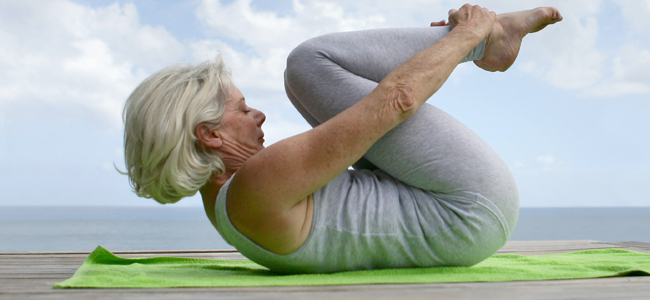
Programs
Ready to make a change but not sure where to start? Take your pick from a range of inspiring programs tailored to your specific goals. Our guided programs include everything from meal plans, guided meditations, sleep, cleansing and more. They'll support and empower you to improve your health and be the best you can be!
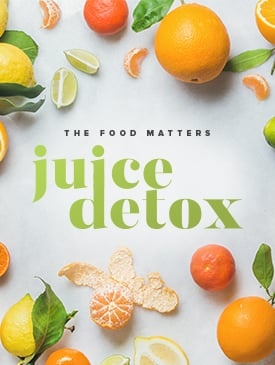
The Food Matters Juice Detox
Designed to help you lose excess weight, increase your energy, and reboot your system from the inside out in just 7 days. Unlock the hand-curated meal plan and shopping lists, and start juicing to feel better than you have in years.
Find Out More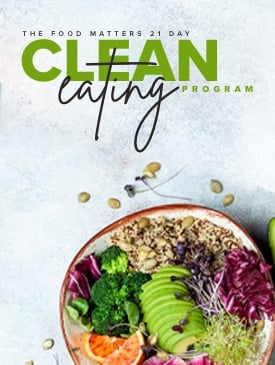
Food Matters 21 Day Clean Eating Program
This is a great program if you want to transition to a healthier lifestyle but are not sure where to start. This wholefood program is filled with delicious recipes that are so quick, easy & affordable that anyone can do it!
Find Out MoreResources
At Food Matters we believe that education is an essential aspect to any healing process. The more we know, the more we are empowered to make change and understand how to decode the messages our bodies are telling us. Here are some suggested resources for you to check out to support you on this journey.
Films

Food Matters
You Are What You Eat
Food Matters is a hard-hitting, fast-paced look at our current state of health. Despite the billions of dollars of funding and research into new, so-called cures, we continue to suffer from a raft of chronic ills and everyday maladies. Patching up an over-toxic and over-indulgent population with a host of toxic therapies and nutrient-sparse foods is definitely not helping the situation.
Read MoreReferences
1. National Clinical Institute for Health and Care Excellence (UK); 2014 Feb
2. Arthritis Foundation.
3. Br J Sports Med. 2017 Oct 10. Pii: bijsports-2016-097333
4. Arthritis Foundation.
5. Antioxidants and Osteoarthritis. Systems Biology of Free Radicals and Antioxidants. 2014: 2997-3026.
6. PLoS ONE 8(1): e55387
7. Int J Rheumatol. 2011; 2011: 969012.
8. Int J Rheumatol. 2011; 2011: 969012.
9. Pain Med. 2011 Dec; 12 (12):1808-18.
10. Comparing the Effects of ginger (Zingiber officinale) extract and ibuprofen On patients with osteoarthritis. Archives of Iranian medicine. 2005; 8.
11. Rheumatology 2007; 46(8): 1223-1233.
12. Cochrane Database Syst Rev. 2015 Jan 28;1: CD005614.
13. Alternative Medicine Review. 2003; 8 (4).
14. Annals of the Rheumatic Diseases. 2013, Sept.
15. Osteoarthritis Cartilage. 2008 Feb; 16(2): 254-60.
16. J Res Pharm Pract. 2013 Jan-Mar; 2(1): 34–39.
17. Arthritis Research UK. 2017.
18. The American Journal of Medicine. 1987, Nov; 83 (5): 60-65.
19. J Fam Pract. 2002 May; 51(5): 425-30.
20. Phytother Res. 2007 Mar; 21(3): 199-209.
21. PLoS One. 2016; 11(9): e0162022
23. Arthritis Foundation.
24. Arthritis & Rheumatology. 1993, Sept; 6 (3): 156–166.
25. Acupunct Med. 2008 Mar; 26(1):17-26
This article is provided for your general information only and is not intended to be a substitute for independent professional advice, particularly medical advice, diagnosis or treatment. You should always seek medical advice from a qualified health practitioner which takes into account your personal circumstances, general health and medical conditions.







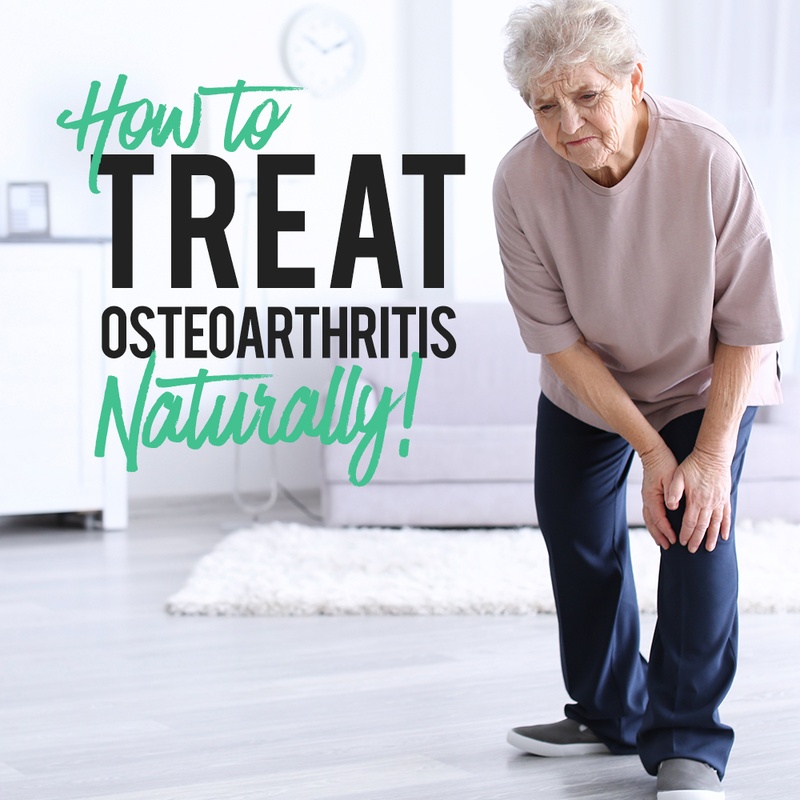


Was this article helpful?
Comment below to let us know!